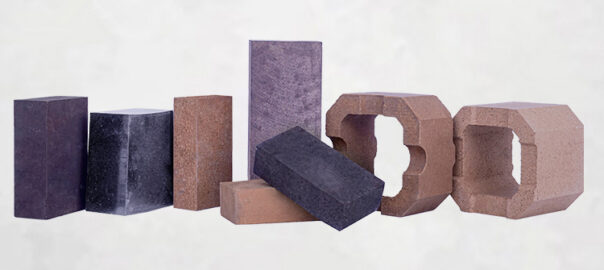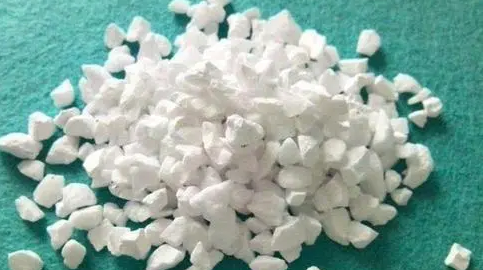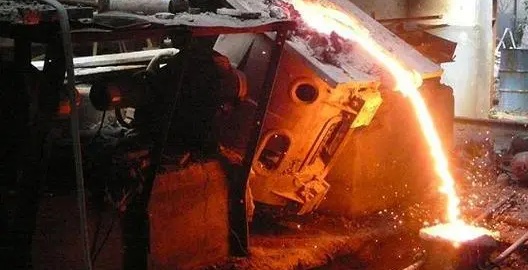With the development of high-temperature technologies such as steel smelting, the development and research of high-quality and efficient refractory materials and raw materials are urgent. Synthetic raw materials are increasingly used as a promising refractory material. Ferrous silicon nitride (Fe-Si3N4) is a new synthetic raw material that has appeared in recent years. It is prepared from FeSi75 iron alloy using nitriding technology and high-temperature synthesis process.

2. Test process
Ferrosilicon nitride contains Si3N4 phase and has some excellent properties of Si3N4, such as high refractoriness, good corrosion resistance, high mechanical strength, good thermal shock resistance, low thermal expansion rate, high It has a series of advantages such as oxidation resistance; it also has good sintering properties because it contains Fe plastic phase. At the same time, compared with silicon nitride, ferrosilicon nitride is cheaper and easier to promote and produce industrially. Therefore, it has been used as a raw material for refractory materials, high-temperature binding phases and high-temperature structural materials. It is now widely used in blast furnaces. In iron trench castables and gun clay. In recent years, more and more research has been done on ferrosilicon nitride materials and their applications in refractory materials, and some results have been achieved. In this article, the synthesis, characteristics and research progress of ferrosilicon nitride and its application in castables, gun clay and composite refractory materials are introduced, and its prospects are prospected.

At present, ferrosilicon nitride is mainly used in refractory materials such as castables, gun clay and composite refractory materials.
1. Castable
The application of ferrosilicon nitride in castables mainly focuses on Al2O3-SiC-C iron trench castables, magnesia castables and high-aluminum castables.
1.1 Al2O3-SiC-C iron ditch castable
Al2O3-SiC-C castable has good slag erosion resistance and erosion resistance, and has been widely used in the main trench, skimmer and branch trench of the blast furnace tap trench. However, due to the development of smelting technology, the continuous improvement of blast furnace utilization coefficient and the requirement of longevity of blast furnace, it is urgent to further improve the service life of Al2O3-SiC-C iron trench castables. The current Al2O3-SiC-C iron trench castables are prone to falling off under the chemical erosion of periodic slag and molten iron, thermal shock and the erosion of slag and iron; at the same time, silicon carbide and carbon in the iron trench castables The oxidation of solid materials at high temperatures will also cause structural damage to the materials, which will lead to damage to the iron trench castables.
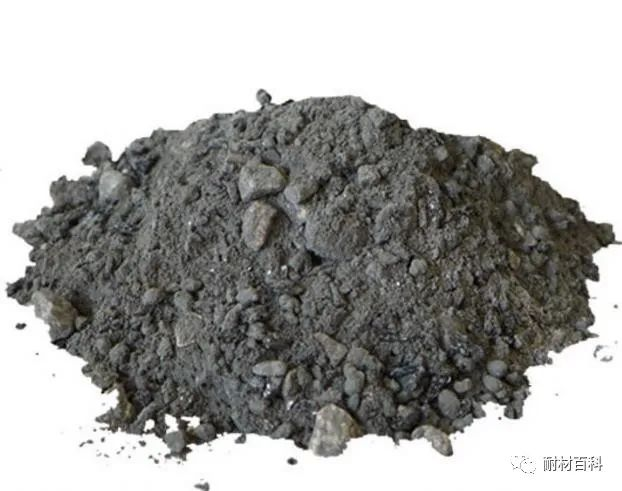
Si3N4 in ferrosilicon nitride has the advantage of not being completely wetted with slag and iron, which can improve the corrosion resistance of iron trench castables; the oxidation product of Si3N4 will form a SiO2 protective film on the surface of the sample, hindering further oxidation of the material. , enhance its antioxidant properties; the metallic plastic phase Fe has a sintering-assisting effect and can improve the mechanical properties of the castable. Chen Junhong et al. compared the anti-oxidation behavior of 8% (w) silicon nitride and ferrosilicon nitride on Al2O3-SiC-C iron trench castables at 1500°C. It was found that under a high-temperature oxidizing atmosphere, Si3N4 in the surface ferrosilicon nitride was first oxidized to form SiO2, which constituted the main body of the oxide layer; with the oxidation of the iron phase material, the formed iron oxide (Fe,) reduced the melting point and The viscosity of the melt improves the wettability and fluidity of the melt on the surface of the castable, forming an oxide layer covering the surface of the castable to prevent the oxidation of the carbon material, making it have better resistance than pure Si3N4 Oxidation properties. The Fe inside the castable does not exist in the form of iron oxide (FexO) and will not be harmful to high-temperature performance. Liu Bin’s research also reached the same conclusion, and found that the N2 generated by the oxidation of Si3N4 in ferrosilicon nitride at high temperatures and the CO generated by the oxidation of carbon materials will block the internal pores of the material, thus effectively preventing further oxidation. Studies have shown that adding 5% (w) ferrosilicon nitride can improve the high-temperature flexural strength and high-temperature oxidation resistance of Al2O3-SiC-C iron trench castables. Xing Chunshan found that with the increase in the amount of ferrosilicon nitride added, the slag erosion resistance of iron ditch castables was slightly improved. Liu Zhijun found that when the addition amount of ferrosilicon nitride is 9% (w), the slag resistance is the best; when the amount of ferrosilicon nitride is too large, the emergence of a large amount of free iron during the reaction will cause a large number of low cobalt ions inside the material. Melting point substances, thereby reducing the slag corrosion resistance of the castables.
1.2 Magnesia castable
Magnesia castables have the characteristics of high refractoriness and load softening temperature, no pollution to molten steel, and good resistance to alkaline slag erosion. They are widely used in thermal equipment such as steelmaking furnaces and ladles. Tu Junbo et al. used silica powder as a binding agent to study the effects of different addition amounts of ferrosilicon nitride fine powder on the normal-temperature physical properties and high-temperature mechanical properties of magnesia castables. It was found that when the addition amount of ferrosilicon nitride is 3% (w), the normal temperature strength after firing at 1200 and 1500°C and the high temperature flexural strength at 1400°C both reach the maximum. This is due to the oxidation of ferrosilicon nitride during the heating process. SiO2 and magnesia generate forsterite, which increases the strength of the material. The solid solution of iron phase substances and magnesium oxide promotes the sintering of the material. In order to solve the problem of poor sintering of magnesia castables after adding ferrosilicon nitride, Tu Junbo et al. also studied the effect of the amount of B4C on the mechanical properties of magnesia castables. The results showed that the addition of B4C promoted sintering on the one hand and improved the The strength of the sample after high-temperature treatment; but on the other hand, B4C is oxidized to produce a liquid phase during the sintering process, which reduces the degree of direct bonding between particles, causing the high-temperature flexural strength of the sample to decrease.
1.3 High aluminum castable
High-aluminum castables have excellent mechanical properties, penetration resistance, erosion resistance, and impact resistance, and are widely used in different parts of furnace linings such as power stations, boilers, casting furnaces, heating furnaces, soaking furnaces, heat treatment furnaces, and induction furnaces. Gao Jie et al. used high-alumina bauxite clinker as the main raw material and pure calcium aluminate cement as the binding agent to study the effect of the addition of ferrosilicon nitride on the performance of high-aluminum castables for aluminum melting furnaces. The results show that as the amount of ferrosilicon nitride increases, the SiO2 generated by the oxidation of ferrosilicon nitride reacts with alumina to form mullite, which increases the normal temperature strength of the burned sample; however, the partial oxidation of ferrosilicon nitride It will cause holes in the matrix and increase the penetration of slag into the sample. When the addition amount of ferrosilicon nitride is 5% (w), the penetration of aluminum liquid in the crucible sample is serious.
2. Cannon clay
Cannon clay is an important refractory material used to block the taphole of a blast furnace. When tapping, slag and iron are discharged from the taphole at the same time. With the enlargement and longevity of blast furnaces and the continuous strengthening of smelting technologies such as high air temperature, oxygen-rich injection, and high pressure, higher requirements have been placed on the performance of taphole mud, such as high resistance to chemicals and slag. and pig iron corrosiveness, good sintering and filling properties, excellent thermal shock resistance and high temperature volume stability, little environmental pollution, easy opening, can extend the tapping time and protect the hearth. Cannon clay has been transformed from a simple consumable refractory material into a functional refractory material, and its quality is directly related to whether blast furnace production can proceed smoothly. Traditional taphole clay can no longer meet the requirements of modern smelting, and it is imperative to develop high-performance taphole clay.
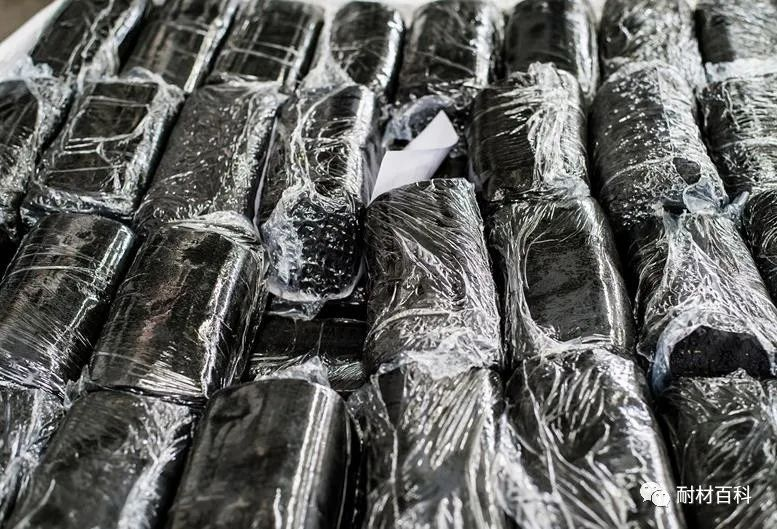
Si3N4 has the characteristics of high melting point, high strength, good thermal shock resistance and stable structure. It improves the high-temperature strength, oxidation resistance, erosion resistance and erosion resistance of the gun clay to a certain extent, but the opening performance of the gun clay is not improved. Obviously, Si3N4 is relatively expensive, which limits its use in gun clay. Ferrosilicon nitride has all the characteristics of Si3N4. The metallic plastic phase Fe it contains can promote sintering, and to a certain extent can solve the problem of difficult sintering of Si3N4. Moreover, the price is lower than Si3N4, so it is suitable for the application of ferrosilicon nitride in gun clay. There are more and more studies.
Research by Chen Junhong and others found that when the addition amount of ferrosilicon nitride is 12% (w), it helps to improve the high-temperature flexural strength and erosion resistance of the taphole clay and prolong the tapping time. Qiu Hailong et al. and Zhan Huasheng et al. successfully applied Al2O3-SiC-C anhydrous gun clay containing 5% and 10% (w) ferrosilicon nitride in large and medium-sized blast furnaces of 3200, 580, 260 and 2000m3 respectively. , the medium-high temperature strength and erosion resistance of waterless taphole clay have been significantly improved. During the use of taphole clay, the hole expansion speed is slow, the opening performance is good, the tapping time is extended to more than 120min, the number of taps is reduced, and the cost is greatly reduced. Reduce the labor intensity of workers in front of the furnace. After adding ferrosilicon nitride to the blast furnace mud of Meishan Iron & Steel Co., Ltd., the anti-slag and anti-scouring properties of the mud are enhanced, and the occurrence of coking phenomenon is also reduced. However, there are also studies that believe that the addition amount of ferrosilicon nitride has little or little effect on the slag erosion resistance of gun mud. Ferrosilicon nitride and metal phases Al and Si are added to anhydrous clay at the same time, using the principle of in-situ reaction to generate nitrides and hydroxides, self-healing and self-reinforcement of the damaged clay structure, and a high-performance Waterless gun clay with excellent performance, and has been successfully used in Shougang and Qiangang Steel.
Qi Huatao found that after adding ferrosilicon nitride to the pothole clay, its high-temperature flexural strength at various temperatures was improved to varying degrees compared with pothole mud added with SiC or silicon nitride. The reason was that there were ductile particles in the ferrosilicon nitride. Reinforcement Fe and intermetallic compound Fe3Si, Fe3Si promotes the sintering of gun clay and the transformation of α-Si3N4 to β-Si3N4, improving the bonding strength between oxides and non-oxides. It was also found that when the addition amount of ferrosilicon nitride exceeds 24% (w), the porosity of the gun clay increases significantly, and the flexural strength in each temperature range decreases accordingly.
3. Composite refractory materials
Composite refractory materials are composed of two or more refractory raw materials with different properties, which are composed of refractory materials with new properties on a macro (micro) basis through physical or chemical methods. The application of ferrosilicon nitride in composite refractory materials mainly focuses on carbon-containing composite materials and carbon-free composite materials.
3.1 Carbon-containing composite materials
Wang Yue et al. found that when ferrosilicon nitride is added to ASC bricks, Si3N4 in ferrosilicon nitride will be converted into Si2N2O during high-temperature use; and as the amount of ferrosilicon nitride added increases, the amount of Si2N2O generated increases, and ASC The high-temperature flexural strength and slag erosion resistance of the samples continue to improve. Al2O3-C series materials are carbon-containing composite materials commonly used in the metallurgical industry. They have high strength, good thermal shock resistance and slag resistance, and are widely used in functional components for continuous casting, such as slide plates. Song Wen and others found that ferrosilicon nitride mainly transforms from Si3N4 to SiC at high temperatures in the AI2O3-C system (α-Si3N4 is first converted into β-Si3N4 and finally into SiC). The Fe3Si particles in ferrosilicon nitride During this process, it gradually becomes smaller and dispersed in the new phase of SiC and the untransformed β-Si3N4, and the material has a dense structure. Chen Junhong et al. studied the phase changes of the Fe-Si3N4-C system material at high temperatures and the action mechanism of the Fe element. The results showed that compared with the Si3N4-C material, the Fe in the Fe-Si3N4-C system has an effect on the conversion of Si3N4 to SiC. The obvious promotion effect greatly reduces the formation temperature of SiC; Fe3Si in Fe-Si3N4 turns into Fe-Si-C melt in the presence of C, and the activity of [Fe] increases, and then reacts with Si3N4 and absorbs it. Si becomes the Fe-Si-C high-silicon transition intermediate phase, and with the flow and penetration of the transition intermediate phase, it reacts with C to form SiC or precipitates SiC crystals in the melt, thereby realizing the promotion effect of Fe on the conversion of Si3N4 to SiC. ; The formation of SiC also divides the iron particles from large to small, and finally forms a multi-phase structure in which iron particles are dispersed in the new SiC phase. A small amount of SiO2 in ferrosilicon nitride also disappears at high temperatures, and a small amount of Si3N4 is transformed into Si2N2O, and is dispersed in the new phase SiC together with Fe3Si.
3.2 Carbon-free composite materials
Zhang Yong et al. and Peng Dayan et al. added ferrosilicon powder (FeSi2) to SiC particles. After pressure forming, they directly nitrided and fired the ferrosilicon nitride-bonded SiC composite material in a nitriding furnace. They found that the added amount of ferrosilicon powder should be Less than 15% (w), and it is necessary to control the progress of the nitriding reaction by controlling the equilibrium partial pressure of nitrogen in the nitriding furnace and slowing down the heating rate, so as to slow down the stress inside the sample during the nitriding process and prevent the test Such damage. The oxidation of ferrosilicon nitride combined with SiC composite materials at 1100~1300°C is mainly the oxidation of SiC and Si3N4. The oxidation product SiO2 can act as a protective film to prevent further oxidation; moreover, the mass change per unit area in the early stage of the oxidation reaction is consistent with It follows a straight line law, the middle stage of oxidation conforms to the quadratic curve law, and the late stage of oxidation conforms to the parabola law. Research also shows that compared to Si3N4 combined with SiC composite materials, Fe in silicon ferronitride combined with SiC composite materials can also improve the thermal shock resistance of the material.
Zhu Xiaoyan et al. used FeSi75 and SiC as the main raw materials, directly nitrided and sintered them, and successfully prepared a ferrosilicon nitride bonded SiC composite material with excellent performance at 1450°C. The compressive strength of this material is 145MPa, and the load softening starting temperature is 1750°C. Its main phase compositions are SiC, α-Si3N4 and Fe3Si. The nitridation product is mainly α-Si3N4, with a small amount of β-Si3N4; and Fe does not participate in the nitridation, but is the stable intermetallic compound Fe3Si. The form is dispersed in the grain boundaries.
Zhai Yawei et al. and LiYong et al. studied the synthesis of ferrosilicon nitride-bonded SiC composite materials at 1300°C using FeSi75, Si3N4 and SiC as the main raw materials. The results show that when the ferrosilicon content is 12% (w), the ferrosilicon nitride-bonded SiC composite material SiC composite materials have the best overall performance; when the ferrosilicon content is 15% (w), too much Fe hinders the complete nitridation of Si, reducing the degree of nitridation of ferrosilicon and reducing the overall performance of the composite material. The intermetallic compound Fe3Si plays the role of a plastic phase in composite materials and can improve the mechanical properties of composite materials. When Qin Haixia and others used thermosetting phenolic resin as a binder to prepare ferrosilicon nitride-corundum composite materials, they found that part of the Fe3Si in the ferrosilicon nitride was converted into Fe4N, and part of the residual carbon in the phenolic resin binder reacted with nitrogen to form Fe4N. C3N4, silicon nitride and corundum form a solid solution, forming β-SiAlON. The formation of these new phases enhances the bonding between particles and matrix and within the matrix, improving the mechanical properties of the material.
Based on the theory of transition plasticity, Li Yong and others successfully developed unburned ferrosilicon nitride-brown corundum composite refractory materials and unburned ferrosilicon nitride-spinel-corundum composite refractory materials, which do not require high-temperature firing and have simple production processes. , the price of raw materials is low, which greatly reduces the production cost. At the same time, the product has the characteristics of high strength, good thermal shock resistance, good corrosion resistance, and long life, which meets the demand for chromium-free refractory materials for RH refining. At the same time, a non-burning ferrosilicon nitride-alumina composite carbon-free skateboard has been developed, which does not require high-temperature firing or oil immersion process, which greatly reduces production costs. The skateboard does not contain AI4C3 and AlN, so it has good hydration resistance. , meeting the needs of clean steel continuous casting. The patented alumina-ferrosilicon nitride composite wear-resistant brick will replace the traditional spinel brick and be used in the transition zone of large-scale cement rotary kilns. It is cheaper, has better wear resistance, and has a service life of more than 1.5a. Improved the operation rate of large cement rotary kiln.
4 Conclusion
As a new synthetic raw material, ferrosilicon nitride is cheaper than silicon nitride. Adding it to refractory materials also solves the problem of difficult sintering of silicon nitride. It is used in trench materials, gun clay and composite materials. There are more and more applications in materials.
Using ferrosilicon to directly synthesize ferrosilicon nitride combined with SiC composite materials provides another idea for the application of ferrosilicon nitride. However, although FeSi75 alloy, the silicon source currently used to produce ferrosilicon nitride, has replaced the more expensive metallic silicon, the relative market price is still high; although the cost of producing ferrosilicon nitride using the carbothermal reduction nitriding method is relatively high reduction, but measures such as vacuuming are still required to form a high-purity nitriding environment in nitriding equipment such as nitriding furnaces; and most nitriding processes still require high nitrogen pressure, which makes high-pressure vessels It is difficult to achieve large-scale production and is not conducive to mass production of ferrosilicon nitride. All these make the synthetic ferrosilicon nitride powder and its combined composite materials more expensive, which is not conducive to cost control and limits its large-scale application and promotion in the metallurgical industry.



